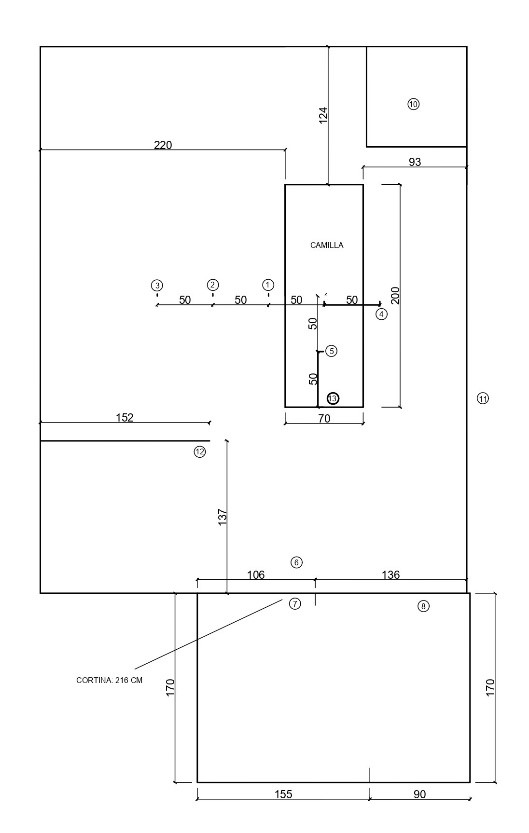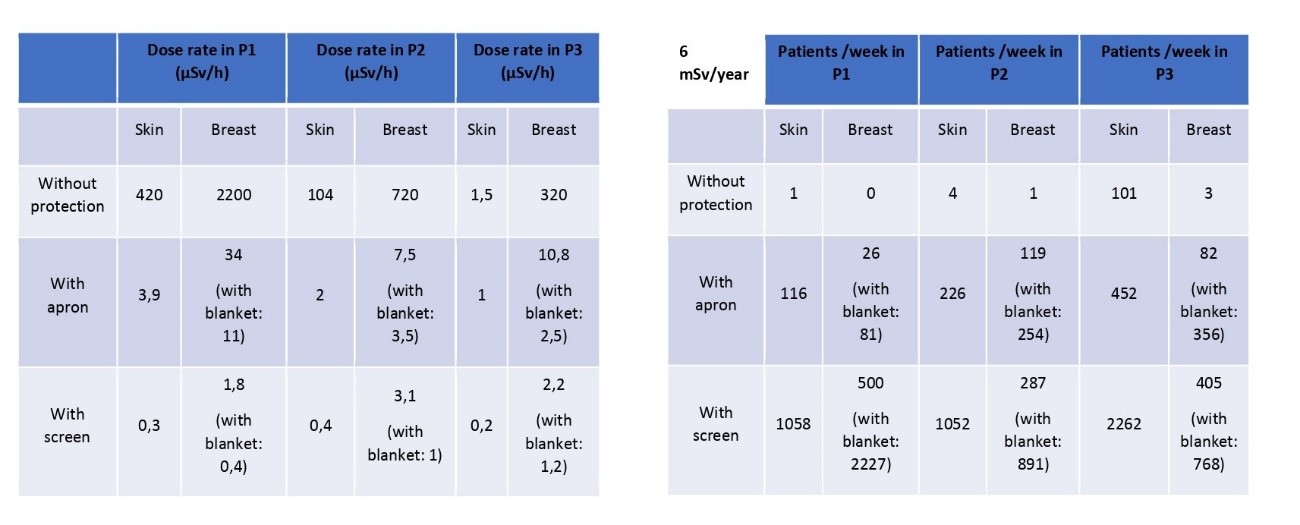Dose estimation of workers in electronic brachytherapy rooms for superficial and breast treatments
PO-2171
Abstract
Dose estimation of workers in electronic brachytherapy rooms for superficial and breast treatments
Authors: Andrea Gonzalez Rodriguez1, Raquel Castro Moreno1, Sergio Alberto Lozares Cordero1, Almudena Gandía Martinez1
1University Hospital Miguel Servet, Medical Physics and Radiological Protection, Zaragoza, Spain
Show Affiliations
Hide Affiliations
Purpose or Objective
The goal of this study is to establish a practical criterion to optimize the use of radiological protection materials in electronic brachytherapy.
Material and Methods
Skin and breast treatments were replicated using the Axxent ® device (Xoft Inc.) and different treatments applicators: a conical applicator with a 50 mm diameter for skin treatments and a 30 cc volume “balloon” for breast treatments. To simulate the patient attenuation, we used RW3 solid water rounding the balloon or in contact to the conical applicator.
Environmental dose rate measurements were taken at different points in a treatment room reproducing real conditions of superficial and breast treatments, with and without different types of radiological protections.
Measurements were taken without any radiological protection in the points of the Figure 1 and with different combinations of radiological protection materials: a 2 mm of Pb equivalent attenuation screen, a 0.25 mm Pb equivalent leaded apron and, in breast treatments, a 0.5 mm of Pb equivalent leaded blanket.
With these measurements, absorbed doses were calculated over a year with an 8 patient per day or 40 per week approximation. Measurements below 0.5 µSv/h were considered background radiation. Results are compared with the The maximum number of patients that could be treated without exceeding the dose limits was estimated with a dose limit of 6mSv/year, 3/10 of the annual IAEA recommended dose limits [1].
Results
• Radiological protective screen showed more radiation attenuation than using an apron or a blanket (see Figure 2).
• The measurement points were 13 in different treatment room locations (see Figure 1). Nevertheless, employees frequently work at 0.5 m (P1), 1 m (P2) and 1.5 m (P3) from the patient, where environmental dose rate measurements are higher (see Figure 2).

Figure 1: The treatment room plane with the mesurement points.

Figure 2: . Left: Environmental dose rates measurements in points 1,2 and 3 which are respectively at 0.5 m, 1 m and 1,5 m from the patient. Right: Estimation of the maximum patients per week with the same worker without exceeding the dose limit recommendations.
Conclusion
The use of the screen or the apron, both at 1m distance, is enough to satisfy the recommended dose limits for an employee who stay in all treatments.
It is worth mentioning than the measurement uncertainties due to the background radiation might be higher than desirable and special concern is required when concluding.
To be enough protected is important for radiological reasons, but to be excessively overprotected might require more economic resources. Therefore, the knowledge of the correct use of radiological protection materials is essential for an optimal work.
[1] Radiation Protection in the Design of Radiotherapy Facilities. Safety Reports Series. No.47.